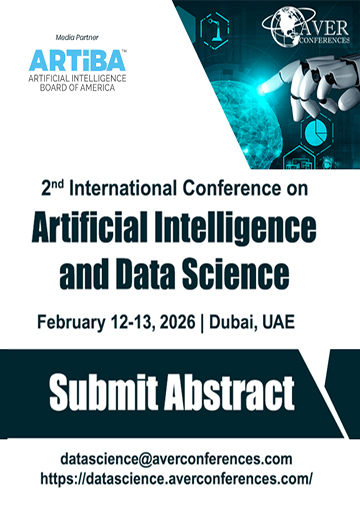Transforming Machine Learning with Meta-Learning Techniques

Machine learning has an emerging method called meta learning which helps AI models train and get better more quickly at various tasks. Meta-learning promises to learn adaptable models that can generalize well, even in new environments with very little data, unlike the typical machine learning algorithms that rely on massive input datasets and long training periods. This adaptability is crucial as AI moves into increasingly dynamic areas such as healthcare, robotics, and language processing where quick, smart adaptation can make a huge difference to all-round performance and the ability to solve problems.
What is Meta-Learning?
The subset of machine learning defined as learning to learn, also known as meta-learning, is about training algorithms to become more efficient at learning over time. Traditional machine learning algorithms aim to be masters of a certain task, while meta-learning can be understood as tuning of the learning process, such that models learn to adjust to a new task with limited data more efficiently.
Key Concepts:
-
Base Learner: This is the model that does specific tasks like image recognition, language translation, etc.
-
Meta-Learner: This model learns to make the base learner perform better by learning any hyperparameters, learning rates, training strategies, etc.
Meta-learning is different and does not require retraining for every new task. In environments where the data is scarce, or where tasks change often, this approach proves useful. Techniques like gradient-based meta-learning are used to fine-tune the learning rate, allowing models to learn more effectively and generalize better across various domains.
How Meta-Learning Works: Key Components
Meta-learning is achieved through learning how to learn — by encoding new ways of learning into machine learning algorithms such that the models can improve their performance across many different tasks. In contrast to traditional models, meta-learning attempts to make learning efficient with fewer data points and it’s particularly effective for changing environments. Here’s how it works:
-
Tasks and Task Distributions: Training simply over a lot of different things instead of one helps it learn more generalized skills that can be used for new situations. The model adapts to various data distributions attached to each of its tasks.
-
Gradients and Optimization: The base learner provides gradients to the meta-learner which then adjusts its parameters to learn when the base model should be updated optimally. Such a procedure facilitates the convergence to a minimum speed during the training on a new trial.
-
Adaptive Learning Rates: Model agnostic meta-learning (MAML) techniques allow models to determine the best learning rates for those tasks so that they can generalize better from a small number of examples.
Consider the following code snippet that illustrates a basic gradient-based meta-learning approach:
Code Snippet:
# Example Code for Gradient-Based Meta-Learning
def meta_learning_step(model, tasks):
for the task in tasks:
# Compute gradients based on the task
gradients = compute_gradients(model, task)
# Update model parameters using gradients
model.update(gradients)
Meta-learning enables models not only to do tasks, but also to adaptively improve their learning strategies, yielding more robust and efficient machine learning algorithms through these mechanisms.
Types of Meta-Learning Approaches
Meta-learning methods can be categorized into three primary approaches, each suited to different problem types in meta-learning in machine learning:
-
Metric-based Meta-Learning: This approach is to have the model learn to rank tasks or samples against similarity and can then adapt quickly to new situations by looking for similarities it had in previous experiences. For example, a model can classify similar images with limited data and no supervision. For tasks where there is a natural way of measuring closeness between data points (e.g. image recognition or clustering), the metric-based methods work very well.
-
Model-based Meta-Learning: In this approach, we look to build models that are robust by nature, in other words, with built-in adaptability— usually with memory-augmented architectures. The aim is to allow the model to perform well and recall past information rapidly to quickly adjust to such new tasks. For instance, recurrent neural networks (RNNs), or memory-augmented networks allow the model to quickly predict in dynamic environments, such as real-time decision-making of robotics.
-
Optimization-based Meta-Learning: Meta-learning based optimization accelerates a model's learning speed by adjusting how it learns from new data. Instead of needing to train from scratch, it learns to optimize (and more efficiently learn) parameters or learning rates that are task-specific for subsequent training. For example, gradient-based meta-learning oscillates its gradient descent based on previous knowledge and accelerates adaptation in domains where efficiency is crucial, like online learning.
Below is a simple optimization-based meta-learning code snippet for the popular gradient-based meta-learning method, MAML (Model Agnostic Meta-Learning). This example is in Python using PyTorch to illustrate how a model’s parameters are optimized for rapid adaptation to new tasks.
Code Snippet:
import torch
import torch.nn as nn
import torch.optim as optim
# Define a simple model (e.g., a neural network with one hidden layer)
class MetaModel(nn.Module):
def __init__(self, input_size, hidden_size, output_size):
super(MetaModel, self).__init__()
self.hidden = nn.Linear(input_size, hidden_size)
self.output = nn.Linear(hidden_size, output_size)
def forward(self, x):
x = torch.relu(self.hidden(x))
return self.output(x)
# MAML meta-learning function
def maml_training(meta_model, tasks, meta_lr=0.001, task_lr=0.01, inner_steps=5, meta_steps=1000):
meta_optimizer = optim.Adam(meta_model.parameters(), lr=meta_lr)
for step in range(meta_steps):
meta_loss = 0
# Iterate over tasks
for task in tasks:
task_model = MetaModel(meta_model.hidden.in_features,
meta_model.hidden.out_features, meta_model.output.out_features)
task_model.load_state_dict(meta_model.state_dict())
task_optimizer = optim.SGD(task_model.parameters(), lr=task_lr)
# Inner loop: adapt to the task
for _ in range(inner_steps):
x_train, y_train = task.sample_data()
task_loss = nn.MSELoss()(task_model(x_train), y_train)
task_optimizer.zero_grad()
task_loss.backward()
task_optimizer.step()
# Outer loop: update meta-model
x_test, y_test = task.sample_data()
meta_loss += nn.MSELoss()(task_model(x_test), y_test)
# Meta optimization step
meta_optimizer.zero_grad()
meta_loss.backward()
meta_optimizer.step()
if step % 100 == 0:
print(f"Meta Step {step}, Meta Loss: {meta_loss.item()}")
# Example task setup (pseudo-code for brevity)
tasks = create_sample_tasks() # List of tasks, each with sample_data() function
meta_model = MetaModel(input_size=10, hidden_size=64, output_size=1)
maml_training(meta_model, tasks)
Explanation:
-
Inner Loop (Task Adaptation): This model is quickly adapted to task-specific data for each task, which are trained for a few steps. The task_optimizer updates the model parameters within each task.
-
Outer Loop (Meta Update): The meta-learner aggregates the task losses and updates the shared parameters via the meta_optimizer, ensuring the model can adapt quickly across new tasks.
This simple MAML code allows the model to Optimize Meta Learns, to adapt parameters well for diverse tasks.
Meta-Learning vs. Transfer Learning: What Sets Them Apart?
Meta-learning and transfer learning are techniques to enhance the efficiency of learning of machine learning algorithms, although their purposes and mechanisms are different. Transfer Learning is when a pre-trained model from a previous task is used for a new related task. The use of this approach allows knowledge gained from a large dataset to be reused, which benefits when data for the target task is scarce. For instance, a model trained on a large number of images may be fine-tuned for a particular classification task, reducing the time and data required for training.
In contrast, meta-learning, also known as “learning to learn” is the task of quickly adapting to new tasks with a small set of training examples. Whereas meta-learning focuses not on transferring knowledge, but on making the learning process more flexible, i.e. more adaptable.
Key distinctions include:
-
Objective: Meta-learning attempts to study how to learn well, while transfer learning is concerned with using knowledge of one task to assist in learning a new problem.
-
Flexibility: Models that learn to learn generalize more efficiently across different problems, adapting to new situations quickly.
-
Use Cases: Meta-learning is likely to be most suitable when data is sparse or changing rapidly, while transfer learning is best when the data is so abundant that it can be accumulated and has already been curated.
Practitioners need to understand these differences when choosing the right ML strategy for their special challenges in machine learning.
Real-World Applications of Meta-Learning
Meta-learning has shown great potential in many fields where adaptability and efficiency are vital. Here are a few practical applications where meta-learning in machine learning is making strides:
-
Healthcare: Adaptive diagnostic models are assisted by meta-learning, an especially important feature in cases with limited medical data. For example, meta-learning models assist in the personalization of patient diagnosis not needing large data samples and increasing the predictive accuracy across different patient populations.
-
Robotics: Meta-learning in robotics enables robots to learn new tasks without being restrained from scratch, which is critical for robustness in dynamic tasks. They learn basic skills that can be meta-learned and real-time adjusted allowing robots to navigate unfamiliar situations as well as obstacles.
-
Natural Language Processing (NLP): NLP meta-learning enables models to cope with language, dialect, or context with almost zero extra training. For example, this adaptability is particularly useful in multilingual translation applications, where we want models to change languages while being fluent.
Challenges and Limitations of Meta-Learning
Meta-learning in machine learning displays many potential successes but faces many challenges and limitations as well. Computational complexity is one of the biggest challenges. Meta-learning training for meta-learners is often computationally expensive, especially in the case of many tasks or high complexity of the models. It can be prohibitive for organizations that have limited computational resources.
Some of the key limitations include:
-
Overfitting Risks: Since meta learners can easily overfit a small amount of data, it is very hard to generalize to other tasks and datasets.
-
High Data Dependency: Some meta-learning approaches also necessitate disparate task distributions that, unfortunately, are rarely always accessible, especially in cases where data is scarce or difficult to label such as in medical diagnostics.
-
Computational and Storage Demands: The dual-layered processing is expensive in terms of storage, and processing requirements, and as a result suffers from limited accessibility by organizations with constraints in computational infrastructure.
These challenges necessitate ongoing research to make meta-learning data efficient and computationally tractable. Without getting past these limitations, the digit in machine learning cannot scale and will not remain usable.
Future Directions for Meta-Learning in Machine Learning
Adaptability and efficiency in AI are in the making with meta-learning. As we look ahead, several key developments and integrations promise to enhance the field further:
-
Integration with Reinforcement Learning: Reinforcement learning, where an agent learns from the world over time to deal with every problem it sees, could be dramatically altered by meta-learning. These fields combined could allow AI to adapt to new situations and truly execute on-the-fly autonomous capabilities such as robotics and self-driving cars.
-
Enhanced Generalization Across Complex Environments: It is expected that future research will take these results to over-extend the notion of generalization by having meta-learning models to work with even more complex and unstructured environments. Applications such as disaster response or autonomous exploration in new unknown environments will depend on progress made in this thesis.
-
Incorporating Unsupervised Learning Techniques: The combination of meta-learning with unsupervised learning — the process of learning from data with no explicit labels — could also represent its future. For industries with little labeled data, like healthcare or finance, these models could be left to learn autonomously and make interesting predictions.
Moving forward, machine learning algorithms are becoming more autonomous and versatile, and more and more scalable, offering a glimpse into a future where AI can be applied to solve problems across sectors.
Conclusion
Machine learning's meta learning represents an unprecedented leap in the direction of adaptive, resilient AI systems that learn how to learn efficiently on multiple, separate tasks. Meta learning suggests ways to overcome past constraints on reliance and adaptability of data, and extends the capabilities of machine learning algorithms, resulting in models that can learn to generalize and optimize more independently. Such flexibility is critical for advanced AI development in healthcare, robotics, and NLP, paving the path for AI designed to tackle sophisticated, evolving real-world problems in a more flexible and computationally lighter way.






